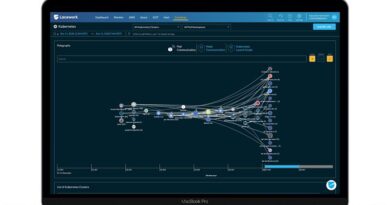Why Healthcare Executives (You!) Should Be Paying Attention to Artificial Intelligence (AI)?
By Sean D Mooney, Ph.D., FACMI, Chief Research Information Officer, UW Medicine
The clinics and hospitals you lead accumulated large amounts of patient treatment data since the implementation of EHR systems. The promise of AI and data science in healthcare has been hyped for years as a panacea to improve patient care, patient safety, provider satisfaction, and streamline business efficiency. It can be hard to disentangle the hype versus reality in the real world of healthcare. However, there are legitimate reasons that you should be both cautious and optimistic about operational AI in your business. The opportunity is real; the challenges and risks are great, but in my view, the broad use of AI will increasingly become a competitive advantage.
Medical AI is not just in the clinic; it’s on our phones, cars, and home assistant technologies (such as Alexa and Google home). In the future, some patients will be making clinical appointments because their smartphones recommended it. In many cases, neither our workforce nor our infrastructure is ready for that future. However, there are many avenues to keep your finger on the pulse of the field. Academic medical centers, such as the University of Washington and UW Medicine, have a research initiative in AI in clinical care that includes dissemination of free virtual seminars aimed at discussing progress in the field for topics relevant to both experts and non-experts alike. An example of this is the UW Institute of Translational Health Sciences (ITHS) which has a regional focus to help adopt innovative technologies such as operational and clinical AI. To that end, we serve the five states Washington, Wyoming, Alaska, Montana, and Idaho region. There is likely a similar effort in clinical and translational research in your region as well (https://ncats.nih.gov/ctsa).
AI methods have recently been achieving breakthroughs
Recently, the website ‘This Person Does Not Exist’ made international headlines showing how AI software can generate synthetic human faces with photo-realistic quality in real-time. These methods work by leveraging large databases of real images of faces and reconstructing what an image of a person looks like while requiring it to be different from the database used to learn what a face looks like. The faces they generate are stunningly realistic.
A method developed by the company DeepMind proclaimed victory in solving the protein folding problem in an international competition. The protein folding problem is a Nobel Prize level challenge once thought to be impossible even in nature. This impossibility was even given a name, the Levinthal Paradox since there were more than 10300 different proposed solutions for a relatively small protein. That’s more stars in the universe or more grains of sand on earth! Nature does find the answer in around a millisecond and now the DeepMind solution can solve this problem with high accuracy and low cost using AI.
Breakthroughs are coming to healthcare. Methods to diagnose and screen have exploded recently. A recent large scale assessment by UW, Kaiser Permanente Washington, Sage Bionetworks and others of screening tools such as digital mammography have recently been shown to improve radiologist judgment in an open, unbiased community experiment. These collaborations between methods and providers are going to become increasingly common.
Likely, your business has matured to the point that you are more AI-ready than you think
Being ready for AI methods is more than just accumulating data, which we are all doing at a staggering rate. Not all data is of equal value; however, EHR, radiology PACS, and other vendors are embracing AI wholeheartedly. Models are being deployed at an increasingly high rate and implemented at a number of sites for extended periods. Your data has likely matured within ancillary vendors such as established technology companies Microsoft, Amazon, Philips and startups such as the UW founded KenSci.
You should be concerned about the risks of AI
The risks of the application of AI are real. Patients are nervous about how their data is used and how automated methods affect their healthcare. Providers are rightfully concerned about the loss of autonomy, the interpretability of computer-based findings, and increasing reliance on computer systems that take away direct patient care. Population health and analytics leads are or should be, nervous about how AI may disproportionately affect patients’ subpopulations based on certain criteria such as demographics, like race or gender, or socioeconomic status. Hospital administrators should be nervous about costs and all of these risks. There is a very real concern that AI can perpetuate or even complicate healthcare disparities by biasing results to certain populations such as race, gender or age.
For better or worse, the effects of AI application are viewed disproportionately by the general public and covered in the media. The closest peer to healthcare is likely the automotive industry. According to the NHTSA, while more than 36,500 Americans died in automobile accidents in 2018, few, if any, of those accidents made national news. However, autonomous vehicle accidents, such as vehicles running Tesla Autopilot, regularly make international news even when the vehicle was not determined to be at fault. Similar concerns have been recently raised about autonomous methods applied to healthcare. Improperly implemented methods or missteps in applying AI could derail efforts to improve patient care under the weight of negative PR.
The business of AI
When you do a deep dive into AI, you generally hear about the accuracy of methods and whether they outperformed their clinical counterparts. However, the business case for AI is still being made and the costs, outcomes, and ROI of integration of AI into clinical workflows is only just beginning to be known. However, based on other domains, the winners will likely have a competitive advantage. In all industries, recently 75% of executives indicated that AI would transform their business within three years (the Deloitte’s State of AI in the Enterprise, 3rd Edition). This transformation requires governance and that governance is likely to be best served as new and distinct from traditional analytics or business intelligence.
How you can learn more to make better decisions
Getting an independent view of your vendor’s pitch is important. CMIOs and CIOs can get you part of the way there. For larger organizations, Chief Data Officers may be required to support advanced analytics and AI needs. Academic medical centers generally have increasing AI experience and provide a regional focus that can assist in both fluency and strategy. The model might be similar to reference pathology laboratory networks or tertiary care models. Additionally, there are virtual opportunities, such as the aforementioned UW AI and Data Science Seminar in Medicine and societies such as the American Medical Informatics Association (AMIA) and the Association of Clinical and Translational Science (ACTS). The future is bright, but you should be paying attention as there are benefits (or values) and accompanying risks to AI implementation.



